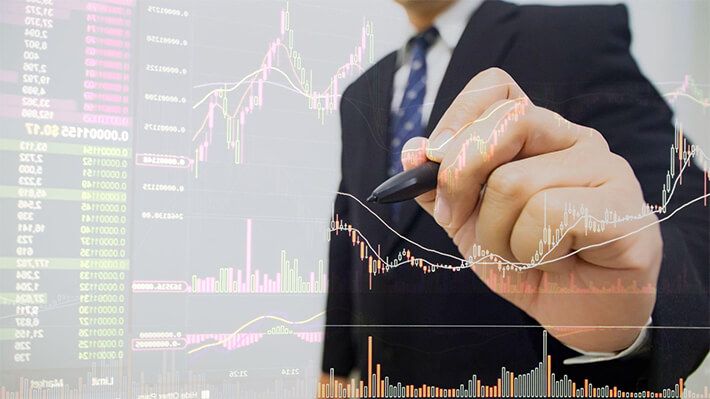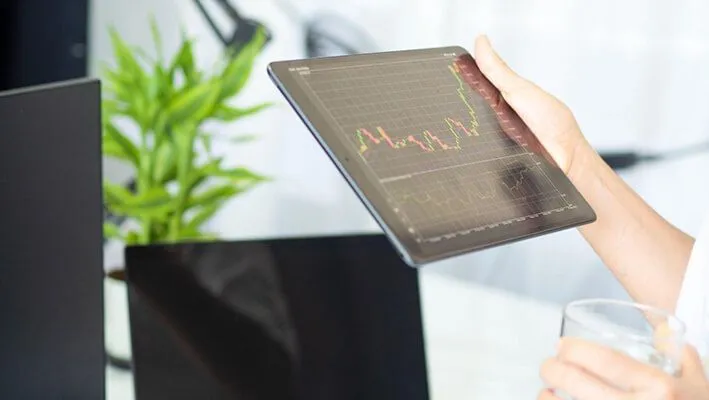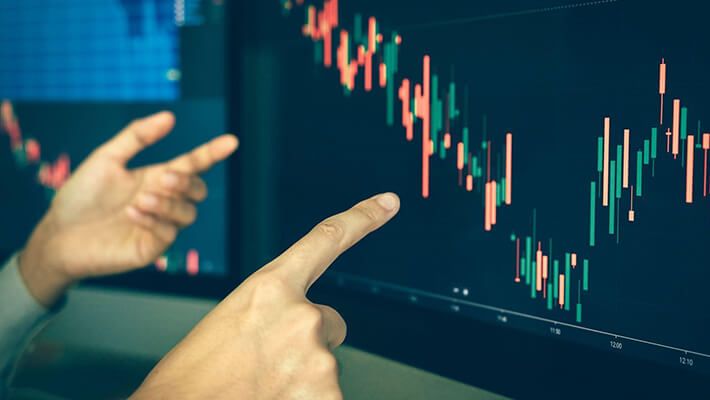Monday Nov 27 2023 04:30

13 min

As a trader, it is advisable to begin by learning different trading strategies before making any trades. A well-defined strategy can help you achieve your financial goals quickly and easily. It is essential to use a strategy, especially if you are trading in the form of a contract for differences (CFDs).
CFDs, or Contracts for Difference, can be held over different time frames depending on your trading strategies and goals. These versatile financial instruments allow traders to tailor their positions to align with specific objectives, whether short-term speculation or long-term trading.
The flexibility of CFDs offers the opportunity to engage in various trading strategies, including news trading, position trading, and other forms of trading.
Follow this article and learn about the CFD trading strategies that are best for you as a beginner trader.
CFD trading strategies are essential tools for traders. They act as clear roadmaps to help you confidently achieve your financial goals. These strategies are well-thought-out plans that guide you through the ups and downs of financial markets.
They come in various forms and adapt to different market situations, making it easier to handle risks and make the most of opportunities, increasing your chances of reaching your financial targets.
Beginner traders frequently find themselves swayed by their emotions when making trading decisions. CFD trading strategies offer a reliable solution to impulsive actions. These techniques will give you access to a well-structured risk management system that allows you to navigate the market with poise and precision.
Furthermore, the strategies help maintain a stable and well-balanced trading psychology, shielding you from emotional decision-making and fostering a disciplined approach to trading.
Well-defined CFD trading strategies can enhance your consistency in trading performance and improve the likelihood of achieving long-term success. It also allows you to adapt to different market conditions and refine your approach over time based on data and analysis.
Once you start applying CFD trading strategies, you will experience more advantages in your trading journey.
But which are the best CFD strategies?
Traders use multiple types of CFD trading strategies depending on their trading preferences. We have outlined the five best and most popular ones for beginners.
CFD traders often use a news trading strategy to take advantage of how the market reacts to important news. This means they pay close attention to the latest updates, economic reports, and breaking news.
You can make smart and timely decisions based on what's happening worldwide, which can help you make potential returns when the market responds to the news.
This type of trading strategy requires exceptional decision-making skills and quick judgements to spot potential trading opportunities.
Announcements of Gross Domestic Product (GDP) growth rates can impact currency markets due to their influence on a country’s economic health and attractiveness to traders.
A country’s GDP growth increases the demand for its currency. You can take advantage of this economic news to capitalise on potential higher returns.
This type of CFD news is ideal for trading forex CFDs, which relies on making potential profits based on currencies. To succeed in forex trading, you must always stay updated with the latest news on currencies and economies, as these factors significantly impact currency prices and, in turn, your trading potential.
Companies regularly release quarterly and annual earnings reports, which basically present the company’s financial health and performance.
Corporate earnings reports include details on company revenue, expenses, profits, and other key financial metrics.
You can use this information to assess the company’s current and future performance. For instance, when a company reports a positive earnings figure, this often prompts an uptick in its stock price as investors are optimistic about its financial health and growth prospects.
Conversely, a negative earnings report tends to lead to a decrease in the company's stock price, as it raises concerns among investors about the company's profitability and future outlook.
When the Central bank changes interest rates or uses other money-related rules, it can have a big impact on financial markets. These changes set off a chain reaction that affects the economy.
For example, if the bank lowers interest rates, it can encourage people to borrow and spend more, boosting the economy and raising the prices of things like stocks. But if the bank raises interest rates, it can slow down the economy and cause prices to drop.
In simpler terms, the Central bank's choices greatly shape how financial markets operate and how people go about their financial decisions. Whether you're setting aside money for the future, dealing in stocks or bonds, or seeking loans for purposes like buying homes and starting businesses, these decisions have a significant effect on all these actions.
Elections, shifts in government leadership, and geopolitical occurrences can cause uncertainty over financial markets, causing fluctuations in market sentiment and investor confidence. This uncertainty may increase market volatility as traders and investors react to changing political landscapes and global events. It can also result in re-evaluating trading strategies, with individuals and institutions adjusting their portfolios to mitigate potential risks and seize emerging opportunities.
These events can send shockwaves through the global economy, influencing how traders and investors perceive and respond to risk.
Furthermore, trade policies and international relations carry the potential to exert substantial influence on particular industries or commodities. For instance, when countries introduce tariffs or trade barriers on imported goods, they can drive up the costs of those products for CFD traders and other consumers.
This price increase may decrease demand for these products, subsequently affecting their availability and market dynamics.
Natural disasters like hurricanes, earthquakes, or wildfires can disrupt supply chains and affect the prices of CFD commodities in oil or agricultural products.
For example, if a big storm wrecks the machines that drill for oil or the roads that carry it, there won't be as much oil, and the price can go up. The same goes for commodities. If a disaster harms the plantation or source of these commodities, it will affect its supply chain leading to a price hike.
These natural disasters create chaos in how things are made and delivered, which can make commodities more expensive for everyone.
Announcements about breakthrough technologies, new product releases, or cybersecurity breaches can significantly impact the stock prices of tech companies and related industries.
Related: Thematic investing: Investing in technology

CFD position trading, also called trend trading, is a strategy where you buy or sell assets and hold onto them for a while to make potential income from long-lasting trends in the financial markets. It is one of the CFD trading strategies that require your patience and the ability to tolerate price swings.
The holding period can go on for weeks, months, or even years when using this strategy. It's a slower, long-term strategy that focuses on understanding the bigger trends instead of the fast buying and selling of day trading. Traders can benefit from the compounding effect, where their assets grow over time, often yielding potential returns than the rapid, high-frequency transactions characteristic of day trading. This strategy needs a comprehensive analysis of fundamental factors influencing the markets over extended periods.
Technical analysis trading is the study of price action. It includes chart patterns and trading indicators to successfully analyse the price of an asset.
Trading chart patterns visually represent historical price movements, aiding in identifying potential market opportunities.
You can look for critical support and resistance levels in the trading charts. These critical levels represent the price chart that has been approached several times but has yet to be breached. An asset's price approaching the critical resistance level may signal you to close your long position. This gives you potential profit and avoids the risk of losing your capital.
Monitoring these levels can provide valuable insights into potential market movements and help inform your trading decisions, acting as markers for entry or exit points.
Technical trading indicators are mathematical calculations and data points derived from historical price and volume. You can use these trading indicators to guide the buying or selling of your financial assets.
Technical trading indicators are combined with fundamental analysis to make the best trading decisions. The choice of trading indicators depends on your trading style, strategy, and the asset you are trading.
Scalping is a distinctive CFD trading strategy for making small yet consistent potential profits. It involves traders buying and selling based on tiny price changes. They do lots of these quick trades to grab small earnings without taking big risks.
The key to scalping is being swift and frequent trades in an effort to capture tiny price movements in the market.
For example, you have entered a position with 100 company shares. You can sell your shares the moment the price moves a bit. This allows you to take a small amount of potential profit. You can do scalping trading simultaneously with other assets you bought to gain more potential returns.

CFD Pairs trading is a strategy that takes advantage of relative price movements between two related assets. You need to identify a pair of assets that have historically shown a strong correlation in price movements.
Let's say you have contacted a broker to trade stocks CFDs of two technology companies, Company A and Company B. These companies are highly correlated because they operate in the same industry and have similar business models.
You have entered a long position on Company B by buying its shares. On the other hand, you decided to go short on Company A by selling its shares, expecting its price to revert downwards.
Company A's stock price catches up with Company B's stock.
You can sell Company B's shares (covering your long position) and buy back Company A's shares (covering your short position). The potential profit comes from the price difference between the two stocks.
CFD pairs trading can give you opportunities even if the market is uncertain. You can use trading indicators to identify suitable pairs and determine when to enter and exit trades in the CFD trading platform. These indicators can include technical analysis tools like moving averages, RSI, or MACD, which help you pinpoint potential entry and exit points with greater confidence.
Additionally, it's important to stay informed about news and events that could impact your chosen pairs of assets. For example, developments in the technology industry, economic reports, or changes in market sentiment can affect the correlation between your paired assets. Being aware of these factors can help you make more informed trading decisions.
We have learned about the CFD trading strategies we can use before trading. Among these strategies are CFD news trading, technical analysis, scalping, and pairs trading strategy. These strategies may require a lot of time to learn, especially for beginner traders.
As an aspiring CFD trader, you must master at least two CFD trading strategies. The more you understand and use multiple CFD trading strategies, the better you can reduce risk and achieve your financial goals.
Trade CFD assets now in one of the best CFD trading platforms worldwide. At markets.com, we offer more than 1,000 financial instruments for traders of any level.
Become a member of markets.com today, and access a cutting-edge trading platform.
When considering "CFDs" for trading and price predictions, remember that trading CFDs involves a significant degree of risk and could result in capital loss. Past performance is not indicative of any future results. This information is provided for informative purposes only and should not be construed to be investment advice.